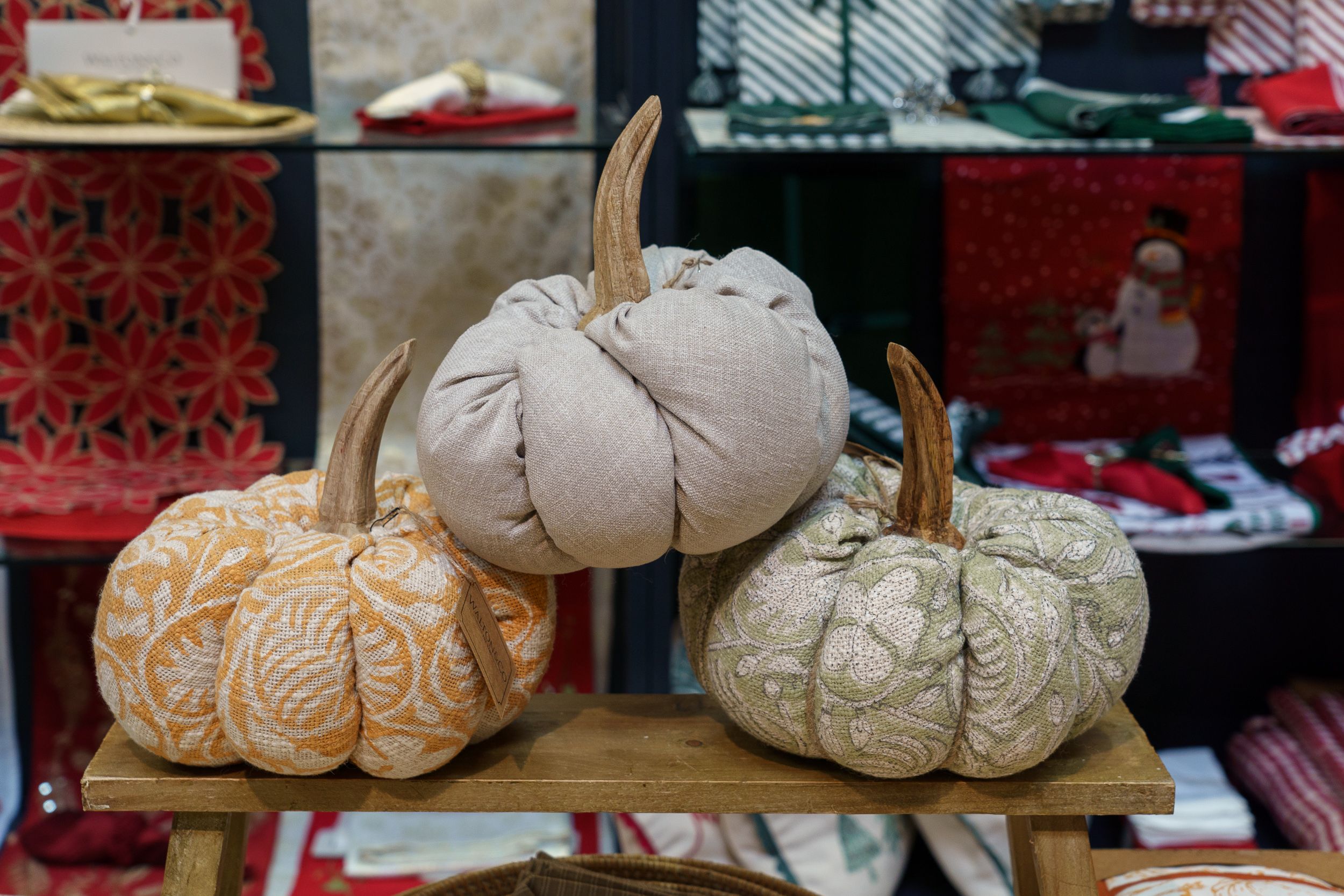Seasonal Displays That Sell: Best Practices for Festive Visual Merchandising
)
Seasonal displays can help retailers draw in customers and boost sales through visually appealing and dynamic presentations. Whether it's for major holidays or seasonal changes, creating impactful visual merchandising displays requires careful planning and execution.
Holiday-themed displays are an important component in retail strategy, especially during peak seasons when consumer behaviour is significantly influenced by the festive atmosphere. These displays aren't just aesthetic enhancements; they are strategic marketing tools designed to captivate attention and drive sales.
Here's everything that you need to know about best practices for seasonal visual merchandising, from understanding the importance of seasonal themed displays to monitoring and adjusting them throughout the season.
Creating a Sense of Urgency and Excitement
Seasonal displays leverage the excitement of the event to create a sense of urgency. This urgency is not just about limited-time offers but also about the emotional trigger of not missing out on the festive spirit. For example, vibrant displays can make customers feel that they need to act quickly to capture the essence of the time of year, leading to spontaneous purchases. The attraction of limited-edition seasonal items or special promotions showcased prominently can influence customers to make quicker decisions, enhancing overall sales performance.
Enhancing the Shopping Experience
Beyond immediate sales, holiday displays contribute to a more enjoyable and immersive shopping experience. They transform the store environment, making it more engaging and aligned with the festive mood. This experience can turn a regular shopping trip into a memorable event, encouraging customers to spend more time in-store and interact more with the merchandise.
For instance, a well-decorated Christmas display with interactive elements such as a photo booth or holiday music creates an inviting atmosphere that encourages customers to linger longer and explore additional products.
Seasonal displays are also great at tapping into the emotional connections people have with holidays. By reflecting the unique characteristics of each festive period—whether it's the cosiness of autumn, the sparkle of winter, or the vibrancy of summer—retailers create an environment that resonates with the emotions and traditions associated with that time of year.
For example, a Valentine’s Day display filled with hearts and romantic motifs can evoke feelings of love and affection, leading customers to purchase gifts for loved ones. Similarly, Halloween displays featuring spooky decorations and costumes tap into the fun and thrill of the holiday, making it easier for customers to envision the celebration and feel motivated to participate.

Aligning Merchandise with Seasonal Themes
Aligning merchandise with seasonal themes not only enhances the visual appeal but also reinforces the relevance of the products. This means creating displays that feature popular items like festive ornaments, gift sets, or seasonal flavours. For example, a Christmas display might feature cooking gadgets alongside ingredients for holiday meals, thus presenting a one-stop solution for customers preparing for the feast. This strategic placement helps in guiding customers’ purchasing decisions and highlights the store’s understanding of their needs.
Researching Trends and Customer Preferences
Before diving into display creation, it’s essential to research current trends and customer preferences. Understanding what is popular and what resonates with your target audience helps tailor your displays to meet their expectations. This research involves analysing industry trends, observing competitor strategies, and gathering customer feedback.
Trend analysis can be conducted by reviewing fashion forecasts, retail magazines and online platforms such as social media and trend websites. For instance, if current trends highlight a resurgence of retro styles or eco-friendly products, integrating these elements into your seasonal displays can make them more relevant and appealing. Additionally, observing competitors’ displays can provide valuable insights into what works and what doesn’t, helping you differentiate your store.
Customer feedback is another critical component of this research. Surveys, focus groups, and sales data can reveal what your customers prefer and how they respond to different types of displays. By incorporating this feedback, you can ensure that your seasonal displays are aligned with your audience's desires, enhancing their effectiveness and driving better results.
Selecting the Right Colours and Materials
Colour and material choices are fundamental in creating effective seasonal displays. Colours evoke emotions and set the tone for the display, while materials contribute to the overall texture and feel. For seasonal displays, it's important to select colours and materials that align with the theme and create a cohesive look.
For example, during the winter holidays, traditional colours like red, green, gold, and silver can evoke festive feelings and create a warm, inviting atmosphere. On the other hand, spring displays might utilise pastel colours and floral materials to convey freshness and renewal. When choosing materials, consider the durability and suitability for the display environment. For instance, fabrics like velvet and satin can add a touch of luxury, while natural materials like wood and hessian can create a rustic charm.
In addition to colour and material selection, it’s important to ensure that your choices complement the products being displayed. The goal is to enhance the merchandise, not overshadow it. High-end jewellery, for instance, might benefit from elegant, understated materials, while a playful, family-orientated toy display might use bright colours and fun textures.

Incorporating Seasonal Themes and Symbols
Incorporating seasonal themes and symbols into your window displays helps reinforce the holiday spirit and makes the merchandise more relevant to the time of year. Symbols such as pumpkins for Halloween, hearts for Valentine’s Day, and fireworks for New Year’s Eve can instantly communicate the seasonal theme and create a festive atmosphere.
When integrating these themes, balance is key. Overloading a display with too many symbols can make it look cluttered and confusing. Instead, use a few well-chosen symbols to accentuate the theme and guide the viewer’s attention.
Additionally, consider incorporating local or cultural symbols that resonate with your specific audience. This personalisation can enhance the relevance and appeal of your displays, making them more engaging and memorable for your customers.
Effective Use of Lighting and Signage
Lighting and signage are critical components in making seasonal displays stand out. Proper lighting highlights key elements, creates ambiance, and draws attention to specific products. Signage provides important information and reinforces the theme of the display.
When selecting lighting, consider the mood you want to create. Soft, warm lighting can evoke a cosy, inviting atmosphere, while bright, cool lighting might be used to create a more vibrant, energetic feel. Use spotlights to highlight featured products and string lights or LED strips to add a touch of festivity.
Signage should be clear, visually appealing, and consistent with the seasonal theme. Include elements such as banners, price tags, and promotional messages that are easy to read and align with the overall display. For instance, a Valentine’s Day display might feature heart-shaped signs with romantic messages and special offers, while a summer display might use bright, colourful signage to promote seasonal discounts.
Monitoring and Adjusting Displays Throughout the Season
Once your seasonal merchandising and displays are up and running, it’s important to monitor their performance and make adjustments as needed. Regularly evaluate how the displays are performing in terms of customer engagement and sales. Look for signs of wear and tear, and be prepared to refresh or update the displays to keep them looking attractive and relevant.
Customer feedback and sales data can provide valuable insights into how well your displays are resonating with shoppers. If a particular display is not performing as expected, consider making changes to improve its effectiveness. This might involve tweaking the layout, adjusting the lighting, or updating the signage to better align with customer preferences or seasonal trends.
Additionally, be mindful of inventory levels and product availability. As the season progresses, you may need to adjust the display to feature new products or accommodate changes in stock. Keeping your displays dynamic and responsive to both customer needs and product changes can help maintain their appeal throughout the season.
Seasonal visual merchandising and display is a vital aspect of retail that can significantly enhance the shopping experience and drive sales. By understanding the importance of themed displays, researching trends and customer preferences, selecting the right colours and materials, incorporating seasonal themes and symbols, and using effective lighting and signage, retailers can create compelling and impactful displays that capture customer attention and increase sales.
Monitoring and adjusting displays throughout the season ensures that they remain effective and engaging. By implementing these best practices, retailers can optimise their seasonal merchandising strategies and create memorable shopping experiences that resonate with customers and drive business success.
Are you a retail professional with valuable insights to share? We're seeking guest contributors for our blog. If you have expertise in all things retail, we invite you to join our network of industry leaders.
Share your knowledge, innovative ideas, and case studies to help shed light on the state of today's competitive market.

)
)
)
)
)
)
)
.jpg.png/fit-in/500x500/filters:no_upscale())
)
)
)
)
)
)
)
)
)
)
)
)
)
)
)
)
)
)
)
)
)
)
)
)
)
)
)
)
)
)
)
)